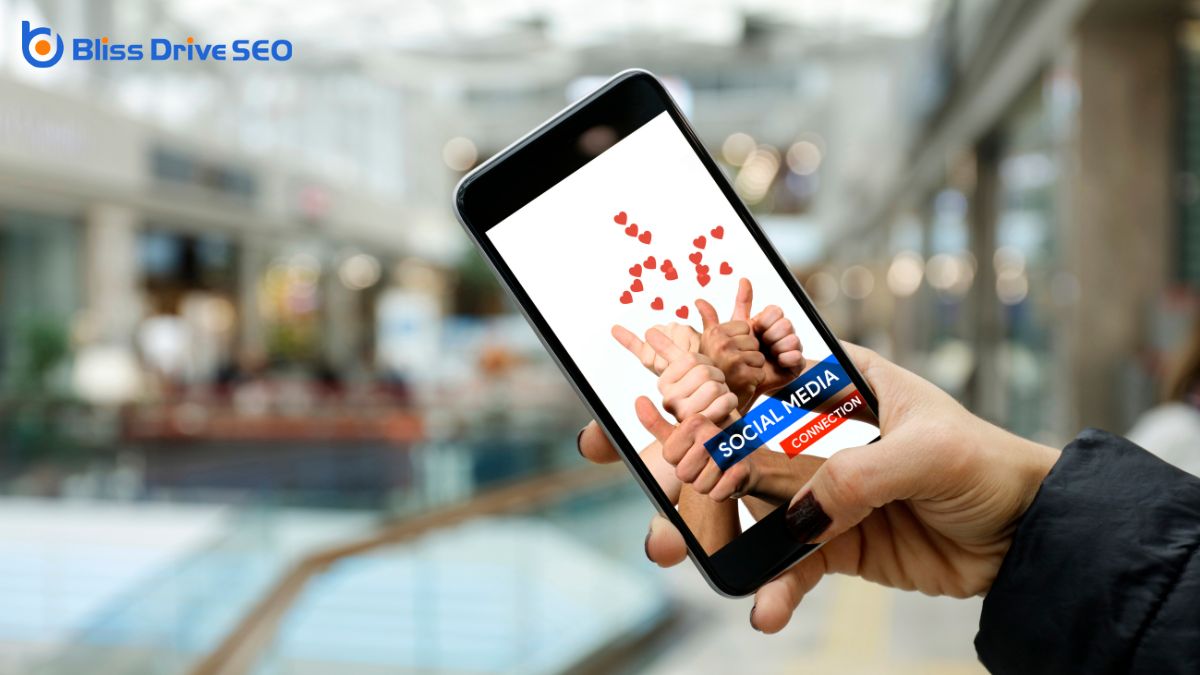Digital Marketing Services
Learn More About Us

When you're looking to measure conversion rateThe percentage of visitors who complete a desired action, such as making a purchase or filling out a... on social media, it's essential to start by defining your specific conversionThe completion of a desired action by a referred user, such as making a purchase or filling out a fo... goals. Are you aiming for more sign-ups, purchases, or something else entirely? Once you have that clarity, tracking the total interactions becomes your next step. Tools like Google AnalyticsA web analytics service offered by Google that tracks and reports website traffic. or FacebookA social networking site where users can post comments, share photographs, and links to news or othe... Pixel can simplify this process, but understanding user behavior is where the real insight lies. By calculating your conversion rate with a simple formula, you're on your way to optimizing your strategies. But how do you guarantee continuous improvement? That's where the art of measurement truly begins.
Defining your conversion goals is a crucial first step in measuring your social media success. You need to clearly understand what actions you want your audience to take.
Whether it's signing up for a newsletterA regularly distributed email containing news, updates, and content relevant to subscribers., making a purchase, or simply engaging with your content, having specific goals helps you focus your efforts. Start by aligning these goals with your overall business objectives.
Think about what each social media platform best supports your desired actions. When you set clear, actionable goals, you can create more targeted content that resonates with your audience.
This clarity helps you track progress effectively, ensuring you can make informed decisions. Remember, well-defined goals are the foundation for measuring and enhancing your social media strategyA plan that outlines the goals, tactics, and metrics for social media marketing efforts..
To effectively measure your conversion rate on social media, you must identify the relevant metrics that align with your goals.
Start by considering what actions you want your audience to take. Are you aiming for website visits, form submissions, or purchases?
Once you know this, link these actions to specific metrics. For instance, if your goal is to increase website visits, track click-through rates. If you're focused on form submissions, monitor lead generationThe process of attracting and converting prospects into potential customers. metrics.
It's vital to choose metrics that truly reflect your objectives, ensuring you don't waste time analyzing irrelevant data.
By focusing on the right metrics, you'll gain insights into your social media performance and make informed decisions to enhance conversions.
Stay focused and keep your analysis goal-centric.

When you're ready to measure your social media conversion rate, setting up the right tracking tools is essential.
Start with Google Analytics, a powerful tool for tracking website actions. By adding UTM parameters to your social media links, you can see exactly where your traffic comes from.
Facebook Pixel is another must-have. It lets you track conversions from Facebook ads and optimize them for better results.
For InstagramA photo and video-sharing social networking service owned by Facebook., consider using Instagram Insights, which provides data on reach and engagementThe interactions that users have with a brand’s content on social media..
Don't forget about platform-specific analytics like TwitterA microblogging and social networking service where users post and interact with messages known as "... Analytics or LinkedInA professional networking site used for career and business networking. Insights. These tools help you monitor user interactions and gauge campaignA set of ad groups sharing a budget, targeting options, and other settings. effectiveness.
To effectively measure conversion rates on social media, start by tracking click-through rates to see how many users are taking the first step.
Monitor engagement patterns to understand which content resonates with your audience.
Finally, assess conversion pathways to identify where users drop off and where they complete desired actions.
Understanding user behavior is essential for optimizing your social media strategy, and one effective way to do this is by tracking click-through rates (CTR).
CTR measures how often people click on the links in your posts, revealing how engaging your content is. By analyzing this metric, you can determine which types of posts resonate most with your audience.
To calculate CTR, divide the number of clicks by the number of impressions, then multiply by 100 to get a percentage. High CTR indicates effective content that captures attention and encourages interaction.
Use tools like Google Analytics or social media insights to track these rates. Regularly monitoring CTR helps you refine your strategy, ensuring your content aligns with audience interests and boosts conversions.
Analyzing engagement patterns on social media gives you essential insights into user behavior and preferences. By observing likes, shares, comments, and other interactions, you can determine what content resonates with your audience.
Note when engagement spikes—this could indicate the types of posts your followers value most. Are they engaging more with videos or infographicsVisual representations of information, data, or knowledge intended to present complex information qu...? Do they prefer questions or statements?
Understanding these trends helps tailor your content strategyA plan for creating, publishing, and managing content to meet business goals., aligning it with what your audience finds appealing.
Don't overlook the timing of engagements. When are your followers most active? Posting during peak times maximizes visibility and interaction.
When you examine conversion pathways on social media, you're basically mapping out the journey users take from initial interaction to becoming customers. This helps you understand their behavior and refine your strategy.
To get started, focus on these key steps:
To calculate your conversion rate on social media, start by identifying the specific goal you want to track, such as purchases, sign-ups, or downloads.
Once you've pinpointed your goal, gather the total number of conversions from your social media platforms during a set timeframe.
Next, determine the total number of visitors or interactions on your social media pages over that same period.
Now, to find your conversion rate, divide the number of conversions by the total number of interactions, then multiply the result by 100 to get a percentage.
For example, if you had 50 conversions from 1,000 interactions, your conversion rate would be 5%.
This simple formula helps you understand how effectively your social media efforts turn interactions into valuable actions.
Understanding your conversion rate is just the beginning of optimizing your social media strategy. To truly leverage your insights, you need to explore social media analyticsThe process of gathering and analyzing data from social media platforms to inform business decisions.... These tools offerThe specific product or service being promoted by affiliates. a wealth of data that can reveal patterns, track performance, and guide your decisions.
Here's how you can effectively utilize social media analytics:

To boost your conversion rates on social media, start by analyzing engagement metricsMetrics that measure user interaction with a website, such as time on site and pages per session. to understand what resonates with your audience.
Implement A/B testing to compare different content strategies and discover what drives the most conversions.
Refine your targeted audiences based on these insights to guarantee you're reaching the right people with tailored messages.
When diving into the world of social media analytics, analyzing engagement metrics is essential to understanding how your audience interacts with your content.
These metrics give you insights into what's working and what's not, helping you refine your strategy. Focus on these key engagement metrics:
Understanding these metrics will help you improve your social media strategy.
Engagement metrics offer valuable insights, but to truly refine your social media strategy, you need to test different approaches.
A/B testing is a powerful method to determine what resonates best with your audience. By comparing two variations of a post, ad, or landing pageThe web page a user is directed to after clicking on an affiliate link, optimized for conversions., you can see which one drives more conversions.
Start by changing just one element at a time—like headlines, images, or call-to-actions—to isolate what works. Monitor performance closely, looking at metrics such as click-through rates and conversions.
Make sure the test runs long enough to gather relevant data. Remember, the goal is to optimize for what your audience prefers, not just to win a test.
Although A/B testing provides valuable insights, refining your targeted audiences is essential for maximizing conversion rates on social media. To do this, you need to explore further your audience's preferences and behaviors.
Here's how you can refine your strategy:
To truly optimize your social media conversion rate, it's crucial to monitor and adjust your strategies regularly.
Start by reviewing your analytics to identify what's working and what isn't. Pay attention to metrics like click-through rates, engagement, and conversions. These numbers offer key insights into your audience's behavior and preferences.
Don't hesitate to tweak your content or targeting based on these insights. Try A/B testing different approaches to see which drives more conversions.
Remember, social media trendsPopular topics, hashtags, and behaviors on social media that are gaining traction. and user behavior can shift rapidly, so stay flexible and ready to adapt.
Also, set realistic goals and timelines for your adjustments. Regular monitoring guarantees you're on track and helps you make informed decisions.
This ongoing process maximizes your potential for increased conversions.
By defining clear conversion goals and identifying relevant metrics, you're already on the right path to understanding your social media performance. Set up tracking tools like Google Analytics and Facebook Pixel to analyze user behavior effectively. Calculate your conversion rate using the formula, and don't forget to leverage social media analytics. Continuously test and optimize your strategies. Keep monitoring and adjusting regularly to guarantee you're always improving and maximizing your conversion rates.
